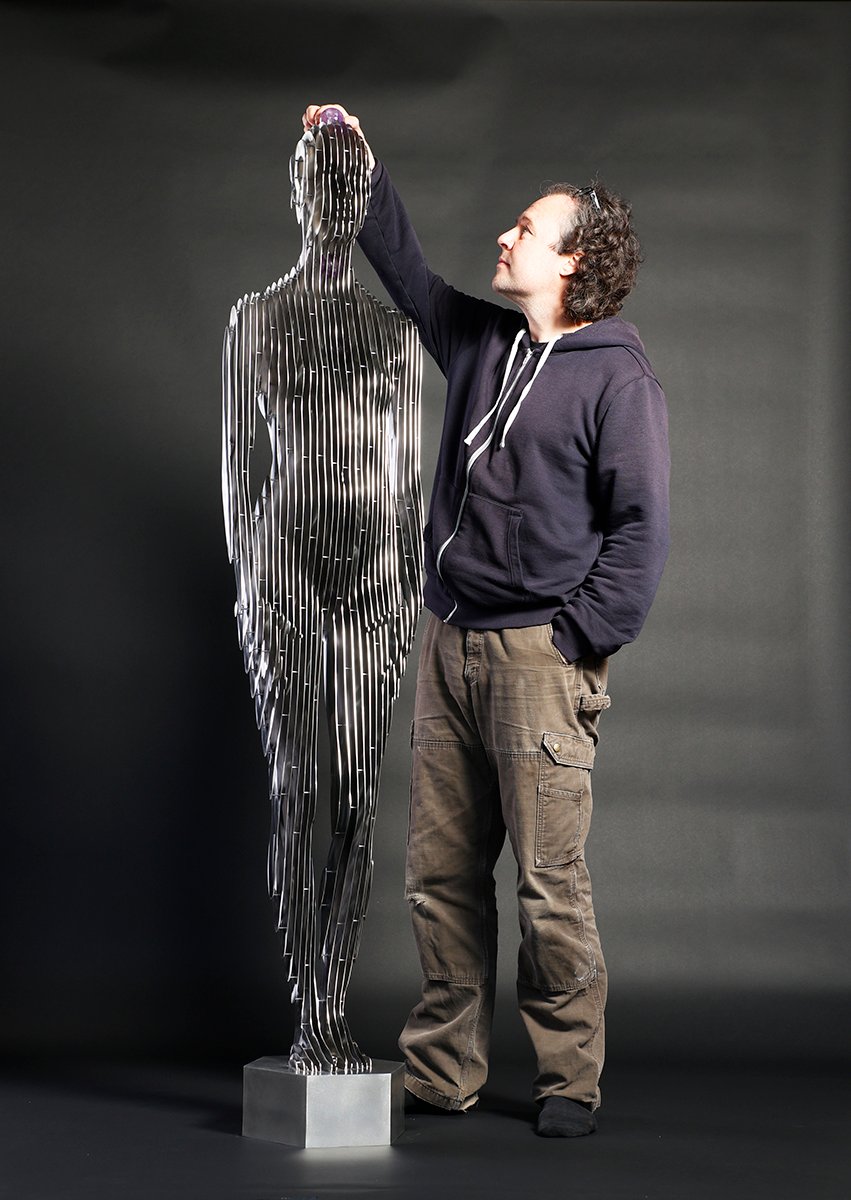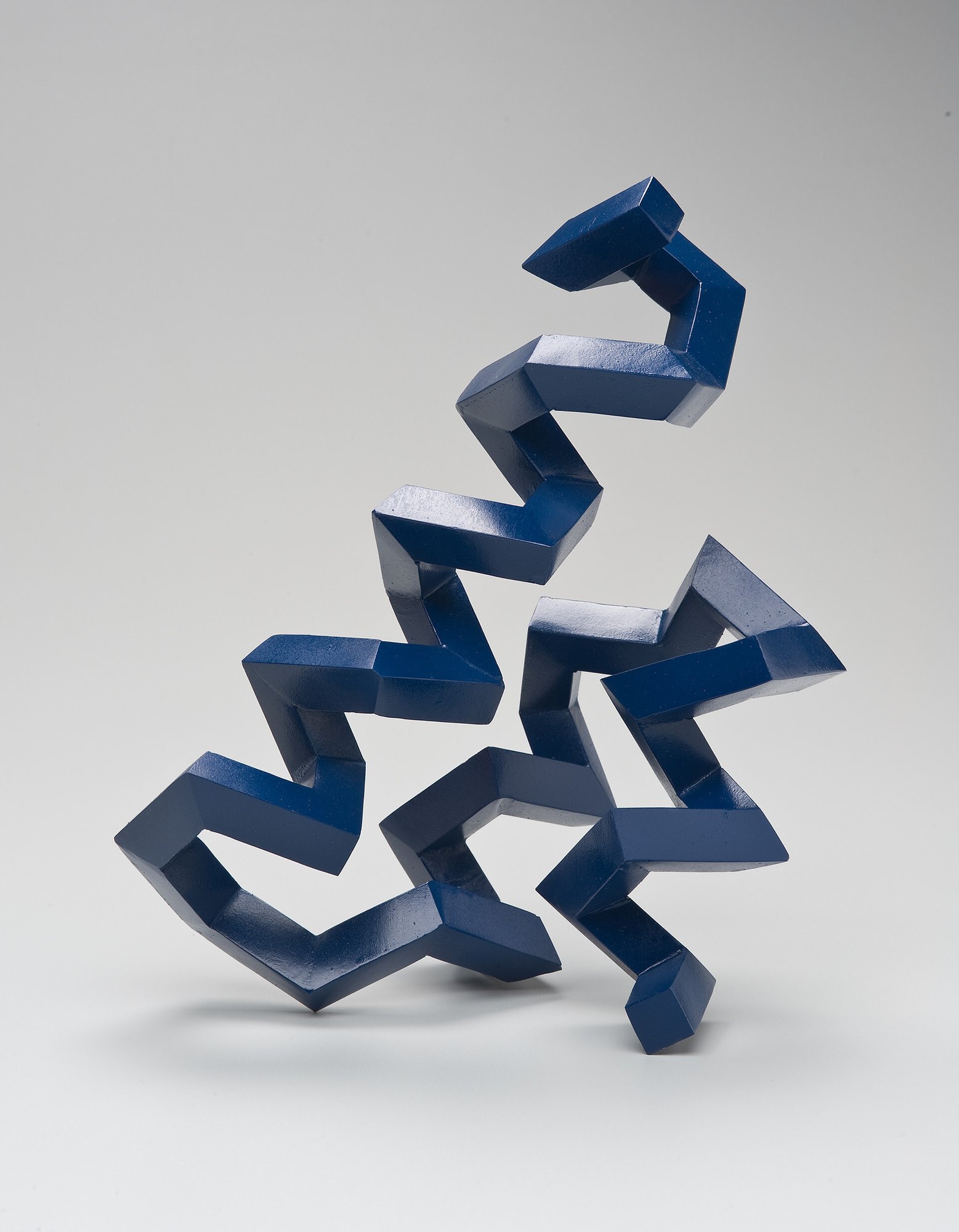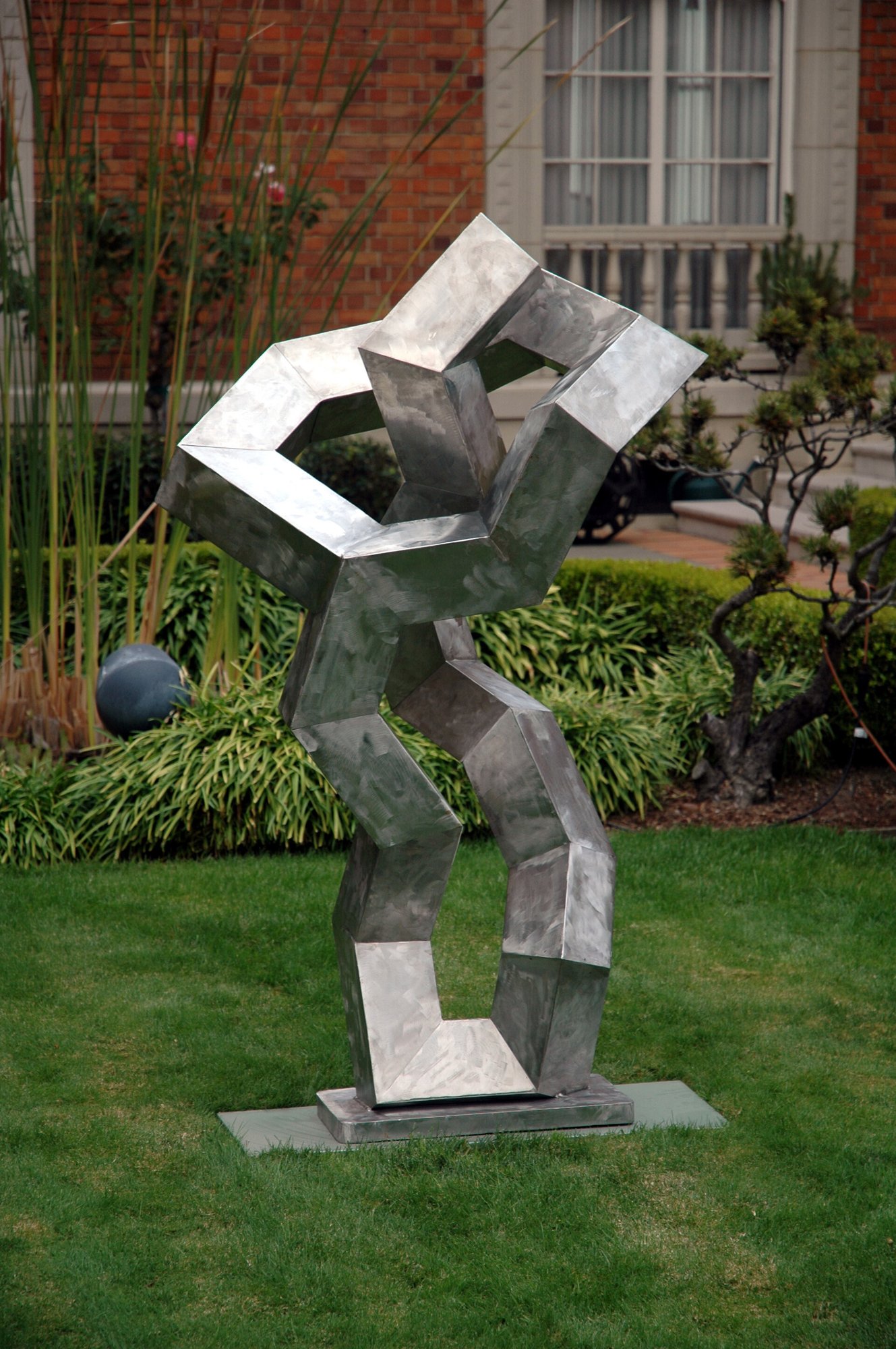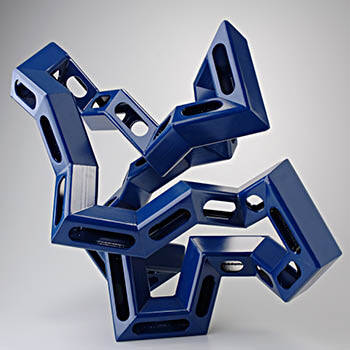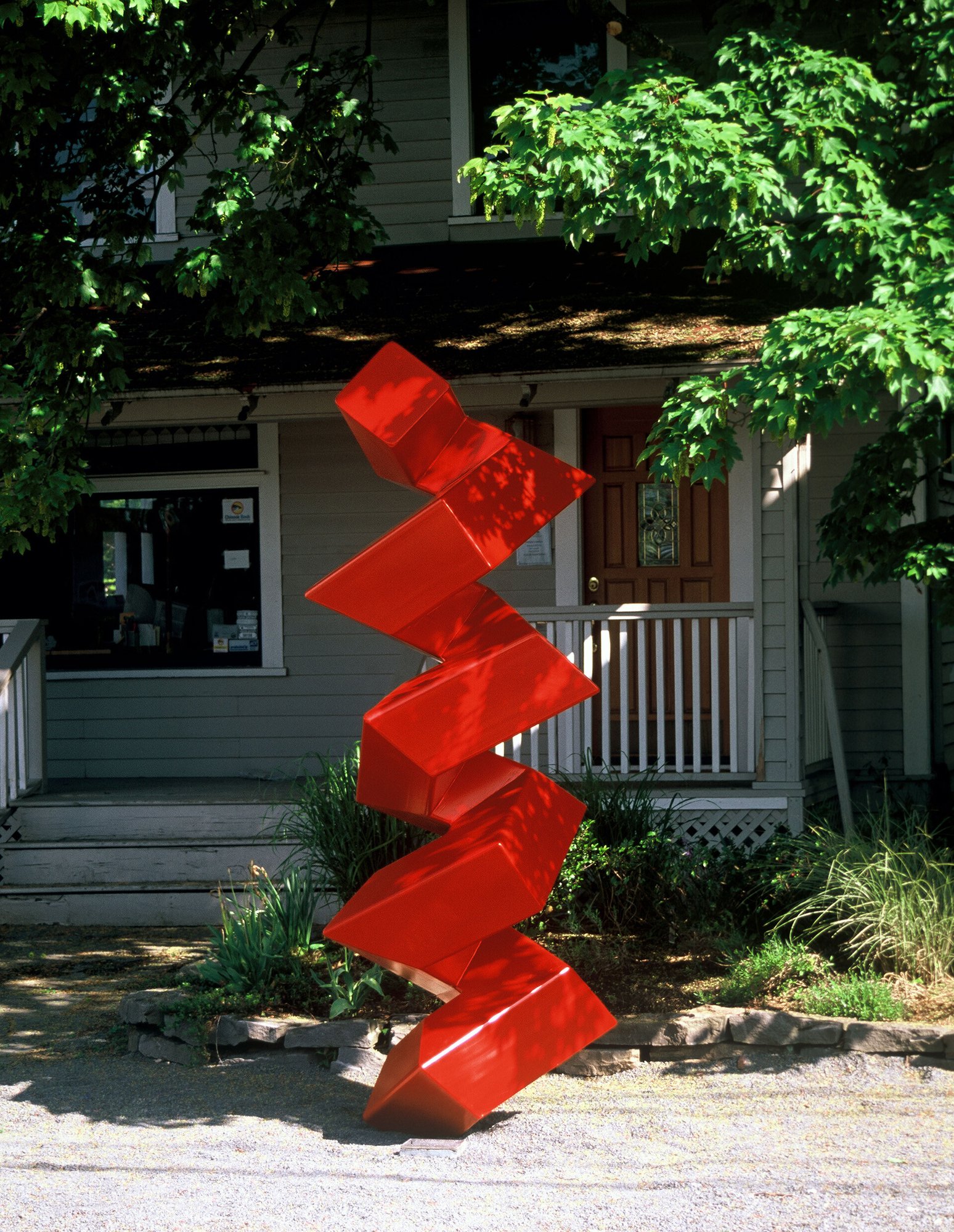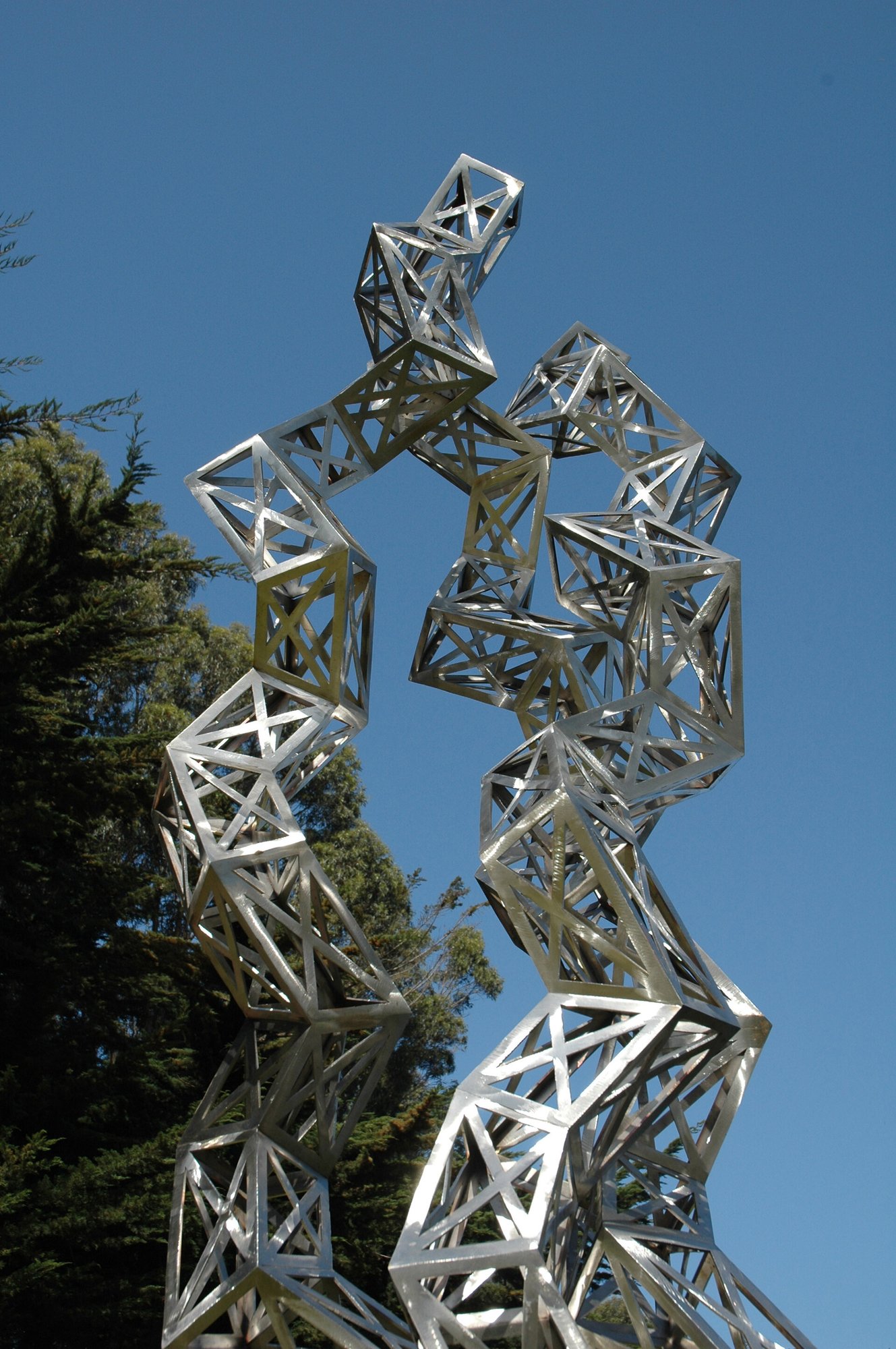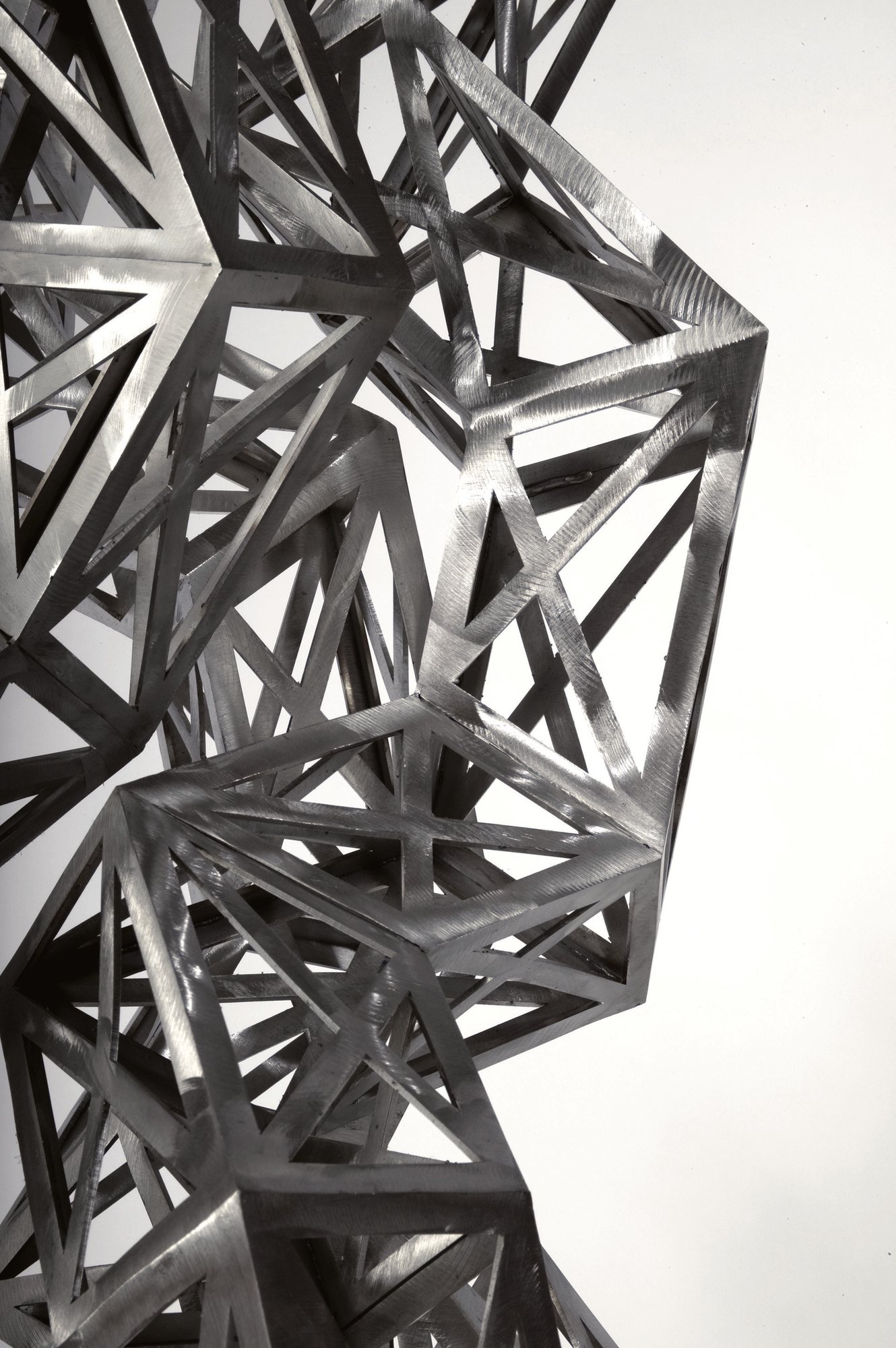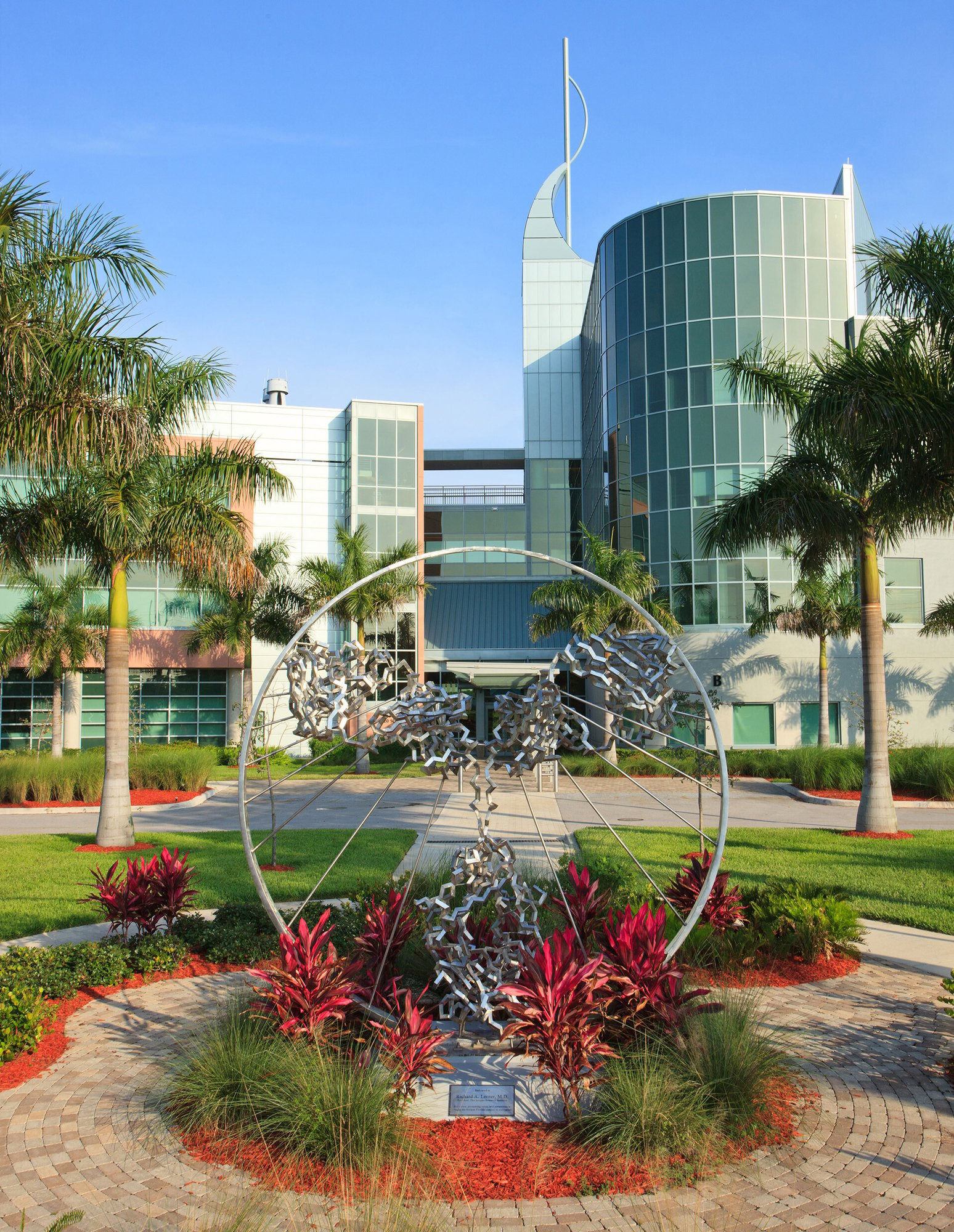Early works inspired by proteins, the molecular building blocks of life.

Birth of an Idea
Many of us have been transfixed by proteins depicted in two dimensions, either on the pages of a book or across our computer screens. Our fascination only deepens when we encounter these structures in three dimensions.
Julian Voss-Andreae elevates this fascination to a new level, transforming the inherent beauty of proteins into captivating sculptures that reflect both the elegance of the molecular world and his unique artistic vision.
"Alpha Helix"
Julian Voss-Andreae embarked on an inventive journey, crafting several sculptures inspired by the alpha helix, using wood as his medium. In a fascinating twist, he adjusted the length of the peptide models to match the wood's natural taper, leading to some captivating discoveries. For instance, he transformed a tree, segmented into more than a hundred uniformly decreasing slices, into an alpha helix sculpture. This compression of a 30-foot tree into a sculpture standing 10 feet tall not only accentuated the tree's inherent form but also unexpectedly mirrored the human spine's structure. This serendipitous revelation of deeper meaning intrigues me greatly. Julian Voss-Andreae's artistic ambition is to forge sculptures that resonate on an aesthetic level. This might entail replicating the precise geometry in some instances, while in others, it is the deliberate deviation from exact accuracy that infuses the artwork with significance.

Proteins
“Angel of the West”
Drawing inspiration from the intricate design of the human immune system's cornerstone molecule, the antibody, this sculpture celebrates the unseen warriors that tirelessly defend us from sickness and malaise. It mirrors the remarkable parallels in shape and duty between the antibody molecule and the human form itself. Encapsulated within a circle reminiscent of Leonardo's timeless masterpiece, the "Vitruvian Man" (1490), the artwork offers a modern interpretation of the antibody molecule. Selected as the emblematic work for the newly established Florida campus of the renowned Scripps Institute, this piece embodies the fusion of Western scientific discovery with the timeless pursuit of healing.
Julian Voss-Andreae
Many artists have been inspired by Quantum Physics, but very few can claim to be Quantum Physicists. Julian Voss-Andreae was born into an artistic family with a profound love of, and appreciation for, the fine arts. His mother is a violinist, and his father wrote, produced and directed a feature-length documentary about a renowned artist back in their native Hamburg, Germany. Both parents were very supportive of Julian’s early artistic pursuits and talent in drawing and painting. However, his deep curiosity and desire to explore the underlying nature of reality, gravitated him toward Quantum Physics, first at the Freie University Berlin and the University of Edinburgh, and later at the University of Vienna, where he did his graduate work in the research group of Anton Zeilinger (recipient of the 2022 Nobel Prize in Physics).
The seminal experiment Voss-Andreae participated in is now commonly featured in physics textbooks. His team was able to illustrate how the famously bizarre world of quantum physics underlies the familiar world as we experience it by demonstrating quantum behavior for the then largest particles ever, soccer ball-shaped molecules affectionately known as “buckyballs.” These studies would later deeply influence his art in multifaceted ways.
It was also through science that he met his wife, Adriana, who was a graduate student in neuroscience at the time, and who has since collaborated with him on several sculpture projects. In 2001, he moved to the US and went on to get his BFA in sculpture at the Pacific Northwest College of Art in Portland, Oregon, where his studio is based to this day. He received his first public commissions while still an art student, and was discovered by galleries soon after. Today, private collectors often have to be waitlisted to receive one of Voss-Andreae’s sought-after sculptures. His sculptures have found their way into hundreds of private and public collections in the Americas, Europe, Africa, Australia, and New Zealand. His works have also been published in the press internationally with high critical acclaim, videos of his work have gone viral with tens of millions of views, and he has received numerous prizes and awards.
While Voss-Andreae’s sculptures are inspired by a diversity of fascinating concepts and themes, his “disappearing” sculptures strike a particularly deep chord. They were conceived when Voss-Andreae imagined himself in the place of the buckyball particle of his graduate research. Just like the internal oscillatory energy of the particle, first described by Planck and Einstein, gives rise to the wave function of quantum physics, he envisioned the rhythmic motion of the human gait giving rise to the same mathematical structure. Visualizing the wave fronts of the wave function as evenly spaced, parallel slabs of steel, the idea for his “light wave beings”, or “disappearing sculptures,” was born. Built in slices of marine grade stainless steel, the most industrial and cold material in art, Voss-Andreae depicts the soft and warm human form in a way that, depending on the viewer’s perspective, appears solid or virtually disappears. Through his art, Voss-Andreae succeeds in metaphorically transcending the classical reductionist-materialist paradigm to reveal the underlying nature of reality as holistic and deeply spiritual.
